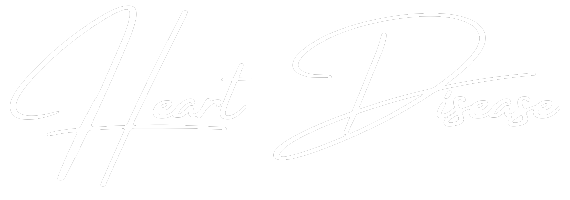
The conversation surrounding cardiovascular wellness often quickly converges on the role of physical activity, but the nuances of how movement fundamentally reshapes cardiac physiology are frequently lost in the recitation of generic fitness targets. Exercise is not merely a tool for calorie expenditure; it initiates a profound, multi-system biological cascade that alters the mechanical, electrical, and chemical environment of the heart and the entire vascular network. A heart that is regularly challenged by controlled physical stress adapts by transforming its own structure and performance profile. Understanding this transformation—the difference between a strained heart and a trained heart—demands a departure from the simple prescription of ‘get moving’ toward a precise consideration of intensity, type, and consistency. The benefits derived from movement are specific, tangible, and proportional not just to the time invested, but to the intentionality with which the activity is undertaken, moving beyond generalized advice toward targeted cardiac conditioning.
…it initiates a profound, multi-system biological cascade that alters the mechanical, electrical, and chemical environment of the heart and the entire vascular network.
The most immediate and fundamental adaptation is the enhancement of the heart’s pumping efficiency, an effect rooted in changes to its physical structure. Regular aerobic exercise, particularly activities that sustain an elevated heart rate over time, stimulates a physiological remodeling known as eccentric hypertrophy. This is not the pathological thickening associated with disease, but a healthy adaptation where the left ventricle, the heart’s main pumping chamber, enlarges its internal volume. This expansion allows the ventricle to hold a greater volume of blood, resulting in an increased stroke volume—the amount of blood ejected with each beat. Consequently, the trained heart can achieve the same necessary cardiac output (blood flow) at a significantly lower resting heart rate, effectively reducing the total number of beats and thus the lifetime mechanical workload on the muscle.
…the trained heart can achieve the same necessary cardiac output (blood flow) at a significantly lower resting heart rate, effectively reducing the total number of beats and thus the lifetime mechanical workload on the muscle.
Beyond the muscle itself, the entire peripheral circulatory system undergoes critical improvements. Physical activity prompts the vascular endothelium, the delicate inner lining of blood vessels, to release greater quantities of nitric oxide, a powerful signaling molecule. This release causes vasodilation, a widening of the arteries that directly translates to a decrease in systemic vascular resistance. This reduction in resistance is the physiological mechanism responsible for the well-documented effect of exercise in lowering both systolic and diastolic blood pressure, easing the pressure against which the heart must pump and significantly reducing the risk of hypertension, a major precursor to cardiac events. The increased blood flow also encourages the development of collateral circulation, essentially building supplementary, miniature ‘detour’ blood vessels around the heart to ensure perfusion even if a major coronary artery is partially blocked.
…This reduction in resistance is the physiological mechanism responsible for the well-documented effect of exercise in lowering both systolic and diastolic blood pressure…
A key element often overlooked in heart health discourse is the crucial contribution of resistance training, frequently overshadowed by the emphasis on traditional cardio activities. While jogging or cycling focuses on sustained aerobic capacity, resistance work—such as lifting weights or performing bodyweight exercises—is instrumental in improving body composition by increasing lean muscle mass. This shift in the muscle-to-fat ratio is highly beneficial, as increased muscle mass raises the resting metabolic rate and improves insulin sensitivity, both of which are critical in regulating blood sugar and managing Type 2 diabetes, a condition strongly linked to cardiovascular disease risk. The American Heart Association now recognizes resistance training as an essential, complementary component to aerobic exercise, emphasizing its role in fortifying the entire system.
…resistance work—such as lifting weights or performing bodyweight exercises—is instrumental in improving body composition by increasing lean muscle mass.
The physiological intensity of the exercise, rather than simply the type, is the most accurate predictor of the magnitude of the cardiovascular benefit achieved. Defining “moderate intensity” remains a source of practical confusion; it is often subjectively assessed but can be more objectively identified using the “Talk Test.” Moderate intensity is the level of effort where one can comfortably carry on a conversation, but not sing. Working consistently at this level, which typically corresponds to 50% to 70% of one’s estimated maximum heart rate, is the threshold required to provoke the desirable adaptations in stroke volume and vascular function. Exercising below this threshold yields minimal structural remodeling, while vigorous intensity (70% to 85% of maximum heart rate) offers compounding benefits but requires careful management and should be integrated gradually.
…Working consistently at this level, which typically corresponds to 50% to 70% of one’s estimated maximum heart rate, is the threshold required to provoke the desirable adaptations…
The effect of movement on lipid profiles is a complex, chemically mediated benefit that contributes significantly to reducing atherosclerotic risk. Regular, sustained physical activity has been shown to favorably modulate circulating cholesterol levels. Specifically, it often leads to a rise in High-Density Lipoprotein () cholesterol, the so-called “good” cholesterol, which acts as a scavenger, collecting excess cholesterol from the bloodstream and transporting it back to the liver for processing. Concurrently, exercise can help reduce the levels of harmful Low-Density Lipoprotein (
) cholesterol and triglycerides. This combined action helps to inhibit the formation and progression of arterial plaque, which is the direct cause of most heart attacks and strokes, underscoring the deep biochemical intervention exercise provides.
…it often leads to a rise in High-Density Lipoprotein () cholesterol, the so-called “good” cholesterol, which acts as a scavenger…
Beyond the physical parameters, the neurological and endocrine influence of exercise on cardiac health cannot be overstated, particularly in the context of chronic stress. Physical activity serves as a powerful natural modulator of the body’s stress response system. Regular exercise reduces the chronic background levels of stress hormones like cortisol and adrenaline, hormones that, when consistently elevated, increase heart rate, blood pressure, and systemic inflammation—all detrimental factors for long-term cardiac well-being. By mitigating the central nervous system’s reactivity to stress, a consistent exercise routine effectively lowers the basal sympathetic “fight or flight” tone, thereby reducing the persistent, low-grade burden placed upon the heart.
…Regular exercise reduces the chronic background levels of stress hormones like cortisol and adrenaline, hormones that, when consistently elevated, increase heart rate…
The optimal exercise routine, therefore, is rarely singular or uniform across all individuals; it is a blended approach that strategically combines different modes of activity to capture the full spectrum of physiological benefits. Current guidelines strongly advocate for a combination of moderate-intensity aerobic work, targeting that essential 150 minutes per week, coupled with muscle-strengthening activities on two or more non-consecutive days. This dual-modal approach ensures that the heart receives the endurance-building eccentric hypertrophy from aerobic work, while the skeletal muscles and metabolism benefit from the resistance training, creating a comprehensive, synergistic cardioprotective effect that is far greater than either component alone.
…This dual-modal approach ensures that the heart receives the endurance-building eccentric hypertrophy from aerobic work, while the skeletal muscles and metabolism benefit from the resistance training…
Consistency and adherence to the regimen are, in the end, perhaps the most critical variables that separate a transient effort from a sustained physiological advantage. The positive structural and chemical adaptations, such as improved endothelial function and cardiac remodeling, are not permanent features but are entirely dependent on the continuity of the stimulus. Cessation of regular activity leads to a predictable reversal of these gains, with stroke volume decreasing and resting heart rate increasing over a relatively short period. Therefore, the long-term success of an exercise program is less about achieving peak athletic performance and more about embedding a moderate, sustainable pattern of activity into the daily fabric of life, making adherence a central metric of cardiac self-care.
…the long-term success of an exercise program is less about achieving peak athletic performance and more about embedding a moderate, sustainable pattern of activity into the daily fabric of life…
The concept of fitness as a spectrum, and the incremental nature of adaptation, must guide the initiation of any new routine, particularly for those with pre-existing conditions. The body responds to a progressive overload, meaning the challenge must gradually increase over time to continue stimulating improvement. Starting with short, manageable blocks of activity, such as three ten-minute brisk walks throughout the day, can be just as effective as a single thirty-minute session for accumulating the necessary volume. The goal is a persistent engagement with motion, understanding that even small, consistent steps generate a cumulative physiological benefit, laying the foundation for more demanding efforts without overwhelming the system initially.
…the body responds to a progressive overload, meaning the challenge must gradually increase over time to continue stimulating improvement.
Targeted movement remodels cardiac structure, strengthens vascular function, and stabilizes blood chemistry—the most effective prescription for enduring heart health.
